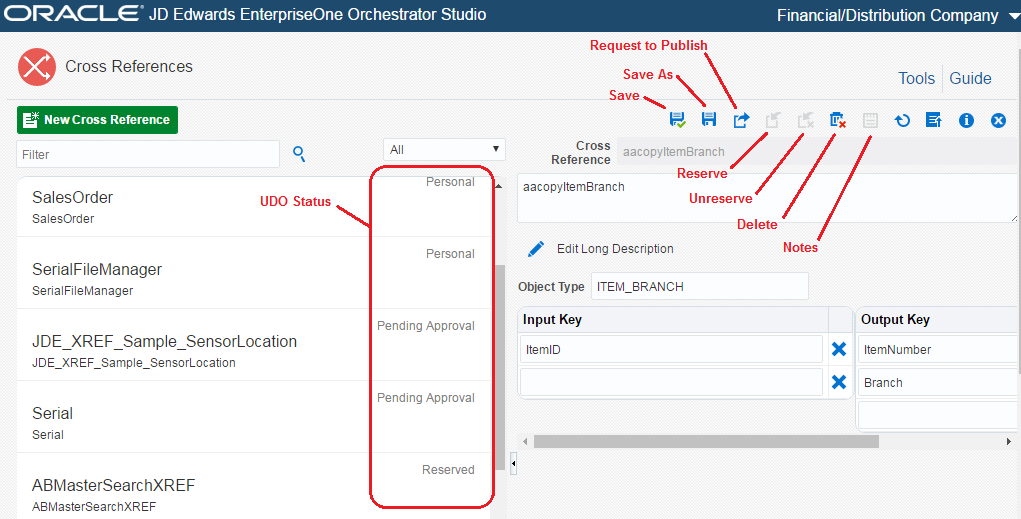User Defined Object (UDO) Features in the Orchestrator Studio
Orchestration components are saved and managed as UDOs in EnterpriseOne. The Orchestrator Studio includes UDO buttons, highlighted in the following image, that enable you to create orchestration components for your own personal use, publish or "share" orchestration components, and modify shared orchestration components created by other users.
Orchestration components as UDOs enables administrators to use EnterpriseOne administration tools to manage the life cycle of orchestration components. For more information about the life cycle management of UDOs, see "UDO Life Cycle and Statuses" in the JD Edwards EnterpriseOne Tools Using and Approving User Defined Objects Guide.
The following table describes the UDO buttons in the Orchestrator Studio design pages and the life cycle status enacted by each UDO action.
UDO Button |
Description |
|---|---|
Save and Save As |
Saves the orchestration component to a status of "Personal." Components with a status of "Personal" are components that you are developing and have not been shared for publishing to the AIS Server. |
Request to Publish |
Sends the orchestration component for approval for sharing. An administrator or approver must approve it in order for the UDO to be shared. The component status changes to "Pending Approval" in the component list and then changes to "Shared" once it is approved. If rejected, that status changes to "Rework." At that point, you can edit the component and then use the Request to Publish button to send it for approval again. |
Reserve |
Reserves a shared UDO so you can modify it. When reserved, no other users can make changes to it. The component status changes to "Reserved." |
Unreserve |
Cancels the reserved component, which returns the status of the component to "Shared." |
Delete |
Deletes a "Personal" UDO. You cannot use this button to delete a shared UDO. Shared UDOs can only be deleted by an administrator. |
Notes |
Available when the component is in the "Pending Approval" status, this button enables you to add an additional note to send to the approver of the UDO. The Notes button is active only if there was a note added the first time the UDO was sent for approval using the "Request to Publish" button. This feature enables you to add an addendum to the original note. |
